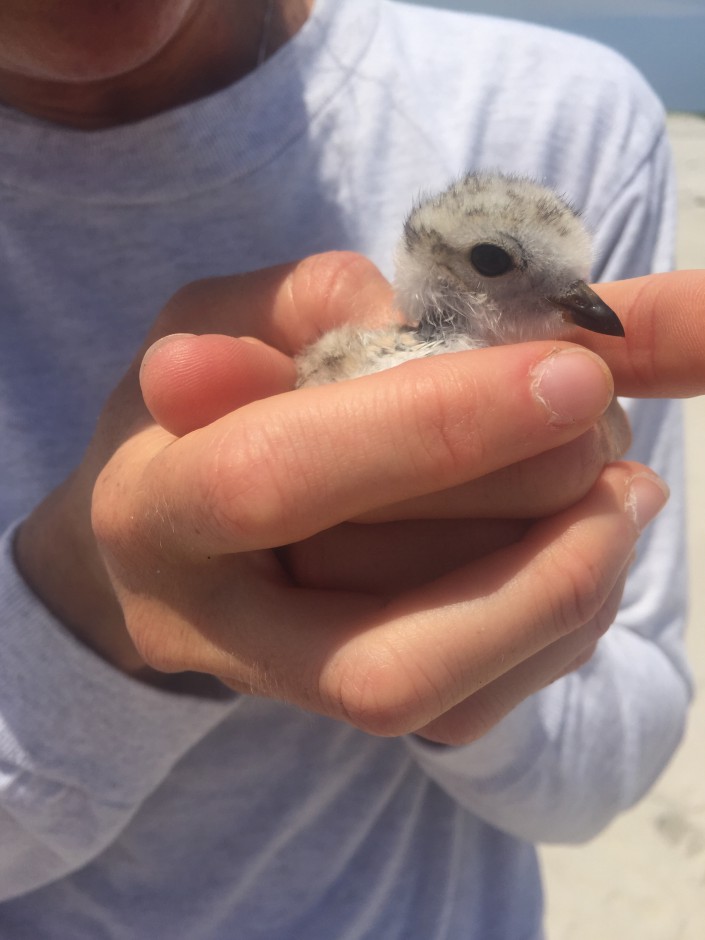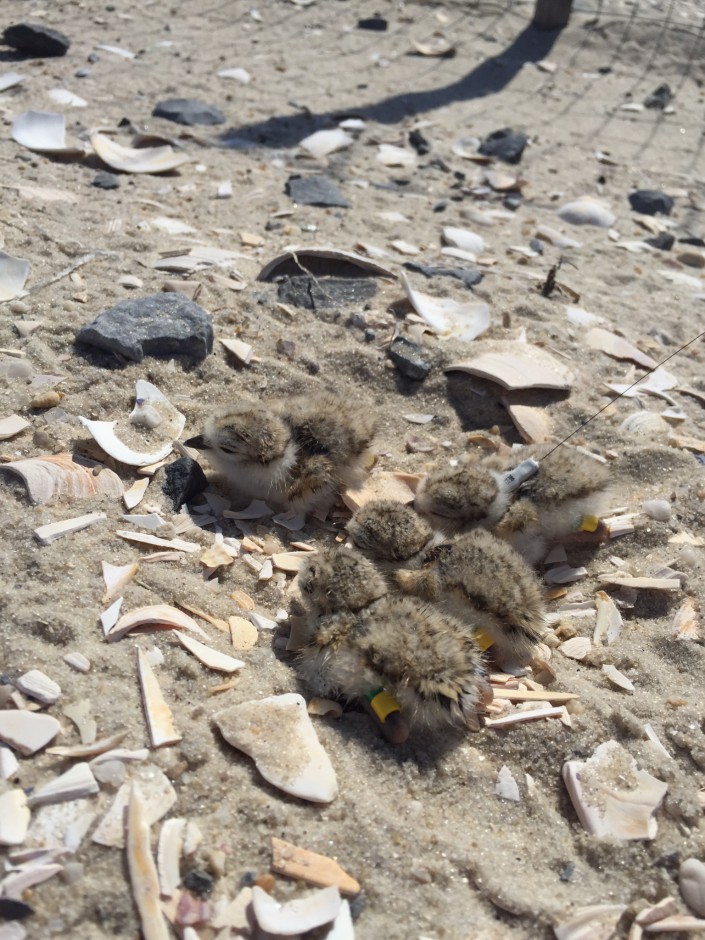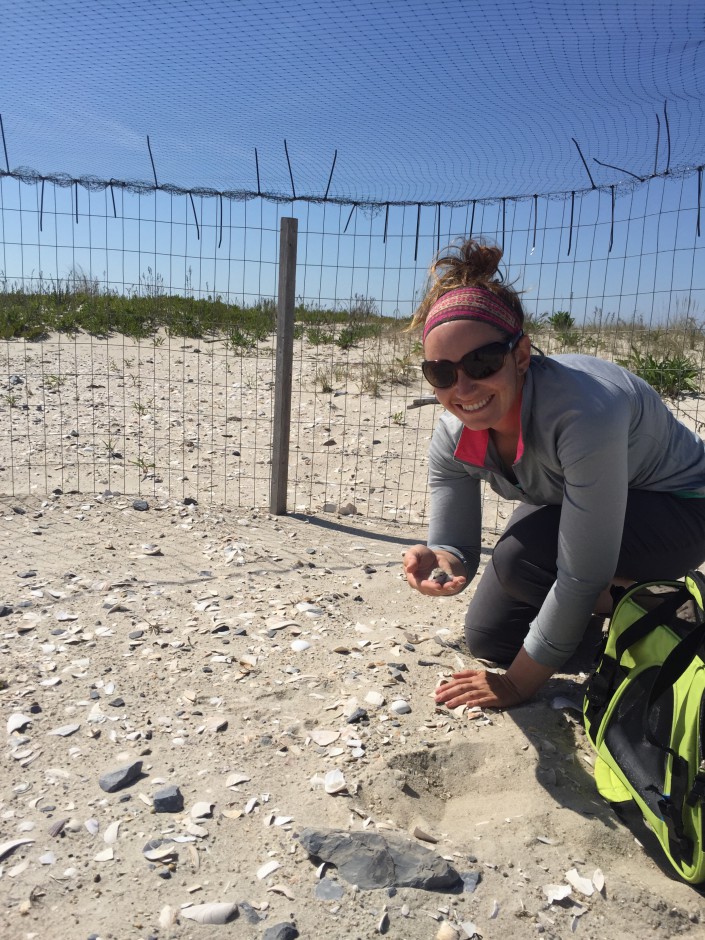The Pitter-Patter of Tiny Plover Feet!
An update on the 2015 Piping Plover Chick Mortality study
By: Emily Heiser, Biological Assistant
Summer is once again flying by and we find ourselves more than halfway through the beach nesting bird season. New Jersey’s piping plovers are almost done incubating their nests and most already have chicks running around!

I would argue that there is nothing cuter than a piping plover chick. Covered in downy feathers, they simply look like little cotton balls with toothpicks for legs. Piping plover chicks are precocial, which means they hatch in an advanced state and are able to feed themselves almost immediately. The adults stay with their young to protect them from predators until they are able to fly, which takes about 25-35 days.
New Jersey plovers have a very difficult time getting their chicks to that 25-day mark. Unfortunately, chicks perish for various reasons. Determining the causes of chick loss in is the main driver behind the New Jersey piping plover chick mortality study being conducted by the State University of New York – College of Environmental Science and Forestry this year.

Michelle Stantial and I have been visiting sites up and down the coast to check on the status of the study broods. To date, we have been able to band 46 chicks from 14 different broods.
The small color bands that we place on the upper legs of the chicks help us to identify each chick as an individual and also helps us know which individual was lost. Every five to seven days we recapture the chicks to weigh and measure them. We hope to correlate chick growth to habitat quality and likelihood of survival. Some exciting preliminary observations have already been made between the sites!
Plover chicks all hatch at around the same weight. During incubation, the embryo gets all of its food from an egg sac. The chicks weigh around six to seven grams when they hatch. Over the next five days, growth rates begin to spike.

By simply looking at some of the chick weights, you can determine where foraging quality is likely going to be greatest. Lower weights could also be attributed to human disturbance levels. Chicks disturbed on a regular basis, may not be able to spend as much time foraging as chicks that are not disturbed as often.
One of the true highlights of this season has been overseeing so many chicks across all of our study sites! Twenty-seven of our study chicks have made it to fledge so far. There is nothing quite so satisfying as watching them spread their wings for the first time. It never ceases to bring a smile to my face as their tiny feet pitter-patter across the sand (and my heart), their perfect wings open up, and suddenly…lift off!
There is still some time left in the season for some more tiny miracles to happen on our beaches, so keep your fingers crossed and send them lots of luck as they finish up their breeding season here in New Jersey!
Learn more:
- Conserve Wildlife Foundation’s Beach Nesting Bird Project
- Conserve Wildlife Foundation’s Online Field Guide: Piping Plover
Emily Heiser is the Biological Assistant for Conserve Wildlife Foundation of New Jersey.
Discover more from Conserve Wildlife Foundation of NJ
Subscribe to get the latest posts sent to your email.
Leave a Comment
More research and scientific findings will not ensure that land managers and state or federal agencies will adopt measures to reduce or mitigate adverse impacts. If research reveals that chicks on disturbed beaches suffer greater mortality, will this result in restrictions on public access? Not likely. Greatest example of this dilemma is climate change and the unwillingness of governments to adopt measures to reduce man’s impacts on climate despite the dire consequences.
Hey Pat, I saw your comments on our Facebook page about posting comments and having them blocked. It appears to be caused by a mis-functioning plugin, which has since been deactivated. Thanks for your feedback.
Comments are closed.